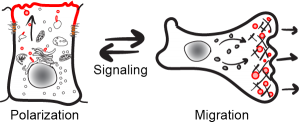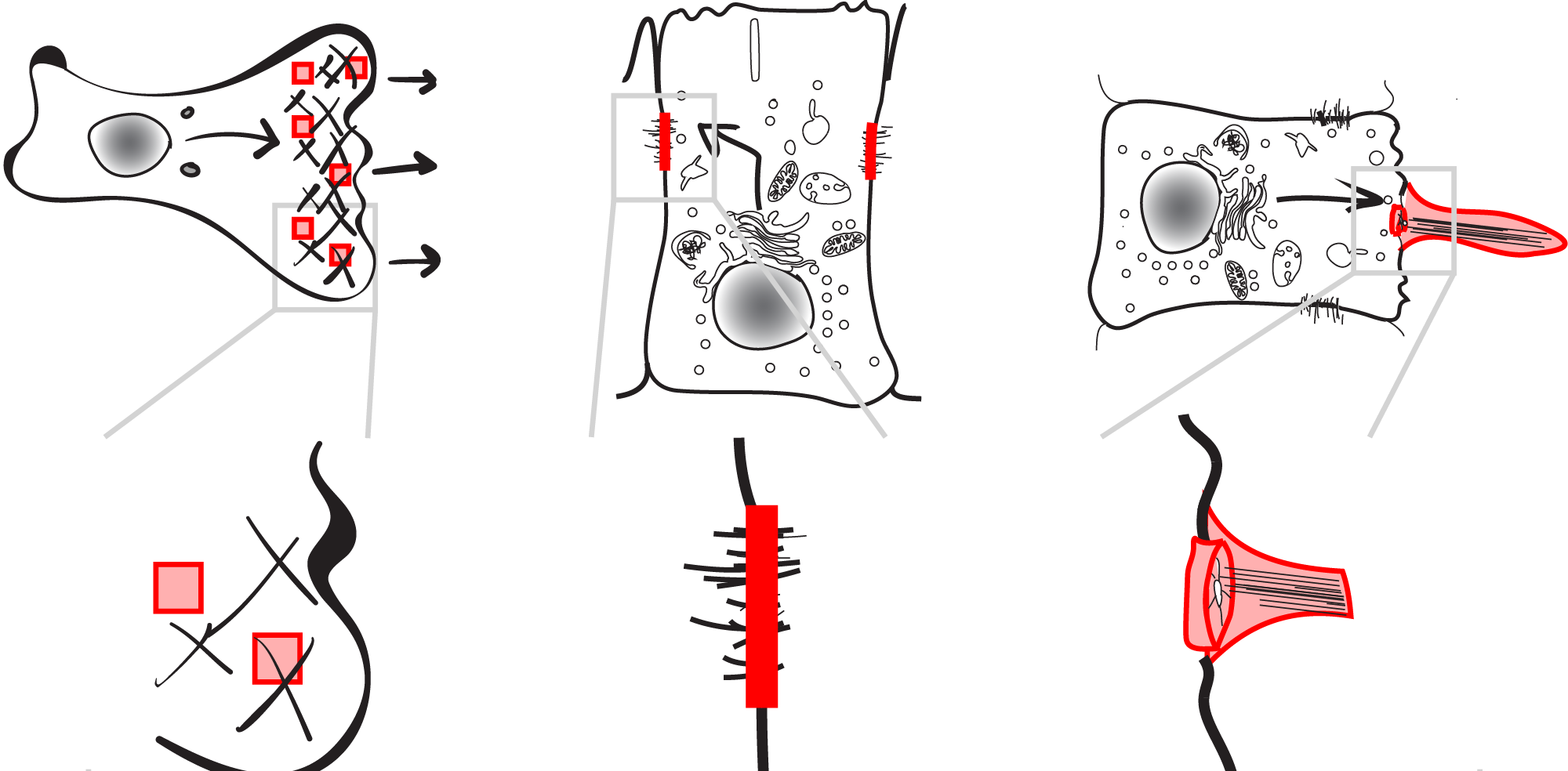Cells harbor structures that define their function. Yet the regulation and mechanisms of the machinery that coordinate such structures are generally poorly understood. We aim to understand the basic mechanics of this machinery.
By understanding how the machinery works, we gain an insight into human health and disease. For example, the cells that line the stomach and intestines are directional – e.g. the side facing food is different from the side facing the rest of your body. Similarly, one side of our skin cells faces the world, while the other faces inward. The misregulation of the structures and organization of these cells results in carcinomas, an especially common and deadly type of cancer. Resolving how the machinery responsible for organization functions is critically important to open new regimes for drug targeting.

We use a reconstitution approach, building the system from minimal components through to its full complexity. We harness state-of-the-art protein biochemistry and membrane biophysical methods in a unique way, aimed at broad and high-throughput experimentation. We build synergy of this strategy with experimental cell biology, which provides both validation and new avenues exploring cellular consequences of perturbations to the coordinating machinery.
The outcome of these studies will be a comprehensive model for regulation and the structural basis for coordination of subcellular structures. Signaling in both development and cancers result in drastic changes to this aspect of biology, and an understanding of the basic mechanisms has the long-term potential for new opportunities in treatment.
